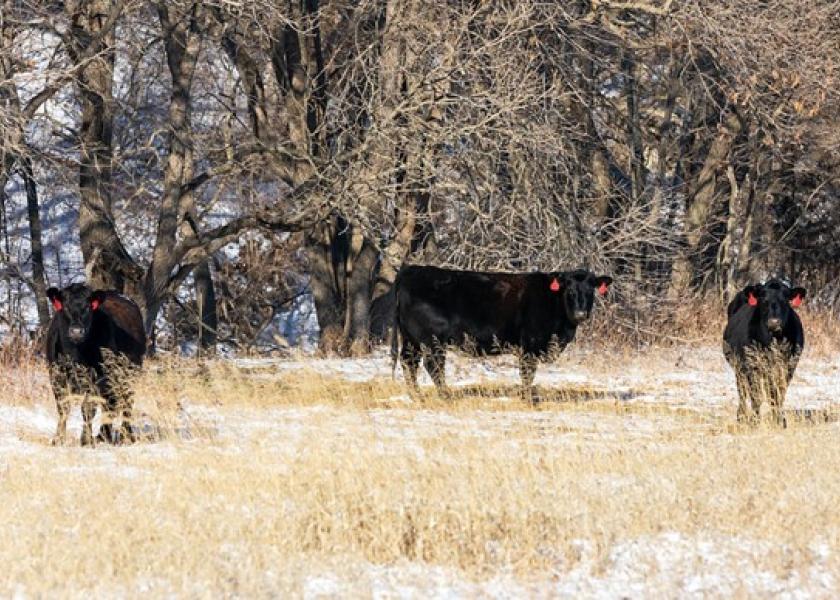Getting Ready for the Next Cold Snap

Cows tend to lose their acclimation to cold weather when we have a series of nice thermoneutral days. Condition of cows and their hair coat can play a large part in their tolerance to colder conditions. Cows in good body condition, those with body condition scores of 5 to 6, with good thick winter hair coats have a lower critical temperature around 32° Fahrenheit. Thin cows with thinner hair coat are at more risk with lower critical temperatures of around 40° F, while cows with wet haircoat have lower critical temperature of 59° F. For each degree below the lower critical temperature energy requirements increase by 1%. With wind chills down to expected to get below 0° F, maintenance energy requirements will increase by up to 30 to 40%.
When cows get below their lower critical temperature and get into cold stress, they can adapt by increasing feed consumption to increase their basal metabolic rate and increase heat of fermentation. Research indicates cattle consume 105% to 110% of predicted intake when temperatures drop below 22 degrees F and up to 125% of predicted intake when temperatures drop below 5 degrees. When acute cold stress occurs from a storm front moving in quickly cows can have a 50% cut in intake through grazing behavior changes and water intake decreases. So along with the increase in maintenance energy requirements the temperature reductions, decreased intake puts them in even more of an energy deficiency. For wind chills of minus-20 degrees or lower, feed intake may be reduced because cattle are reluctant to leave sheltered areas.
This week's arctic blast can create significant dangers for animal health and production. OSU Extension cold-weather recommendations include:
- Make sure cattle have access to as much hay as they want to eat. Ruminal fermentation helps keep the animals warm.
- If increasing concentrate supplementation rates to help offset energy deficiencies it is best to provide feed concentrate supplements every day.
- Feed cattle beside or in a grove of trees or some other windbreak that is large enough for all the animals gathered. The better the windbreak, the lower the animal’s cold stress.
- If there is no natural windbreak available near a water source, a quick and simple one can be made by placing a line of round bales of straw or low-quality hay where cattle can bed down.
- Ensure cattle have unrestricted access to unfrozen water. If water intake is limited, hay intake is reduced and ruminal fermentation is affected.
- Feed cattle relatively close to their water source. The farther away the water source, the longer they will wait to get a drink.
- Unrolling low-quality hay as bedding will provide some relief from the extreme temperatures.
Paul Beck discusses management of cattle in cold weather on SunUpTV from February 6, 2021 https://video.okstate.edu/media/Cattle%20%26%20Cold%20Weather%20(2_6_21)/1_vca5rntt







